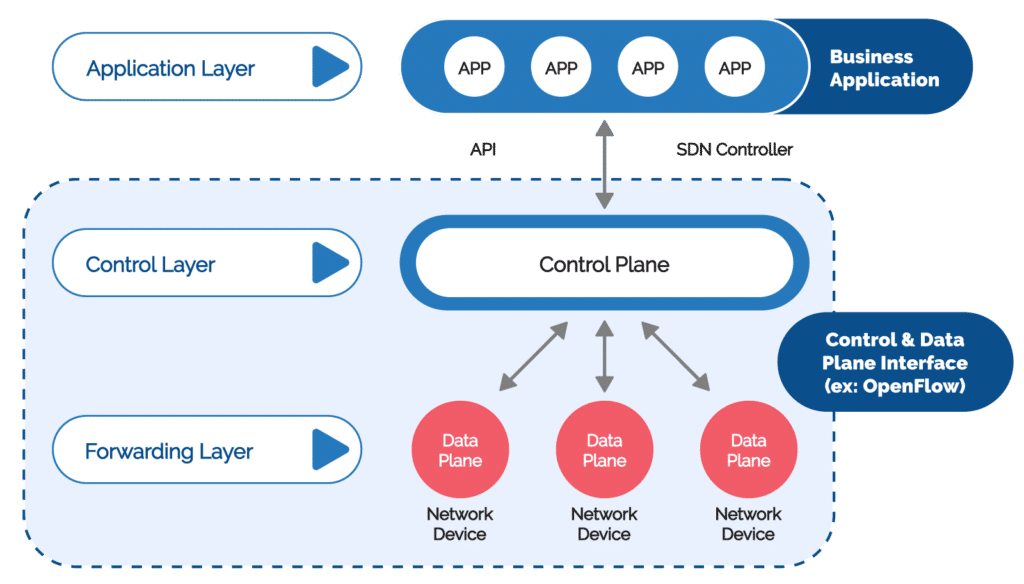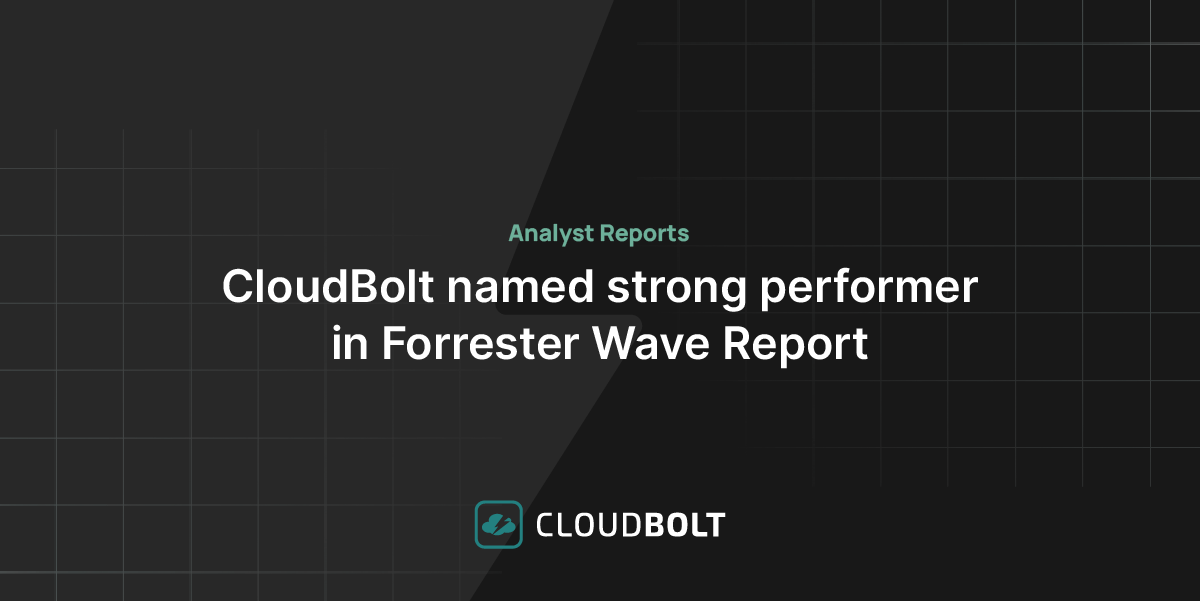Traditional data centers are still relevant. But the way they operate has evolved over the years. Data centers have now transformed from being hardware-centric to highly-agile, software-defined entities. Although there are operational complexities of managing disparate systems, the benefits of streamlining them through intelligent automation are far more real and compelling.
With automation at the core of a data center strategy, enterprises experience fewer manual mistakes, reduced costs, enhanced compliance, and strategic consolidations like managing multiple clouds as a single entity. Workload portability is another significant advantage that further optimizes operational efficiency.
This article explores the key elements of data center automation and their transformative power. We look at approaches, principles and tools that can collectively reshape a data center’s operational efficiency.
How to achieve data center automation: Key elements
The table below outlines the essential elements that define the very core of your IT infrastructure. Breaking down silos and achieving operational efficiency at scale is the prime objective of any automation strategy.
| Key Element | Description |
|---|---|
| Host automation | Automate host setups (both physical and virtual) to minimize manual errors and enhance the speed of deployments. |
| Day-2 Automation | Automate patching at scale, lifecycle management, auditing, monitoring, security management, and cost management. |
| Storage automation | Automate data assignment to different types of storage media for increased performance, reduced costs, and efficient data management. |
| Network automation | Automate network functions, including configurations and management to reduce manual errors and increase the deployment velocity of network services. |
| Security automation | Automate repetitive and low-level tasks to enhance the identification and remediation of security and compliance risks. |
| Environment control automation | Utilize software-defined Infrastructure to manage and control data center utilization and energy consumption of all IT-related equipment. |
| Infrastructure and policy as code | Main mechanism to achieve data center automation. |
What is the main approach to data center automation?
Infrastructure as Code (IaC) and Policy as Code (PaC) practices transform the traditionally hardware-dependent data center into a flexible, scalable, and highly agile software-defined entity. IaC transforms tedious, manual infrastructure management tasks into refined, error-resistant, automated code. PaC reinforces IaC by ensuring the consistent application of system and security policies.
Their collective utilization leads to a reduction in configuration drift and a consistent, predictable environment compatible with continuous integration and delivery pipelines. PaC, especially, is crucial for compliance adherence and maintaining security standards by automating enforcement and reducing deviation.
IaC and PaC principles
Falling under the umbrella of the Software Defined Everything paradigm, the key principles that guide IaC and PaC are given below.
Idempotency
Idempotency refers to the ability of an operation to produce the same result regardless of repeated executions. It is critical in data center automation operations where tasks are often repeated. You must ensure that repeated execution of the same code does not alter the state of your infrastructure beyond the first application.
Immutability
Immutability preserves the original golden image, implying that once you deploy a component, you never directly update it. Instead, if you want to make changes or updates, you create a new instance and destroy the old one. It provides consistency and reliability by eliminating the variations that occur when components are directly updated over time.
“Suddenly, I can offer an engineer productivity! Where it used to take them roughly 40 hours to build up a system to overlay their tools, I deliver all of that in minutes with CloudBolt.”
Balancing declarative vs imperative approaches
The declarative approach specifies the what – the desired end state, leaving the how – the process of achieving that state, to the system. On the other hand, the imperative approach specifies both the what and the how, outlining various procedures for achieving the desired state. Maintaining the balance between declarative vs imperative approaches is essential for consistency and reliability.
Modularity
Breaking down IaC into modular components enhances reusability, reduces complexity, and makes troubleshooting easier. Terraform’s use of modules, for example, streamlines the management of complex environments. Implement robust error handling mechanisms to ensure problems are caught early.
IaC and PaC tools
For improved data center resilience and reliability, pair your IaC scripts with monitoring tools to create systems that automatically correct themselves when you detect an outage or performance degradation. Modern data center automation tools like CloudBolt bridge the gap between technical complexities and operational ease. With CloudBolt’s OneFuse, you achieve:
- A single no-code platform to automate security, configuration, policy and cost management through modular, configuration-based automation.
- Seamless integration with other orchestrators, scripts and automation tools like Terraform and Ansible to support cross-functional agility and flexibility.
- An intuitive, graphical user interface that empowers even the less technical users, encouraging self-sufficiency and reduced dependency on IT teams.
- Seamless redirection of policies to new vendor systems to avoid vendor lock-in.

Day-2 Automation
Transitioning from traditional methods to a lifecycle management system that embraces change can make a significant difference in data center management. The key lies in integrating robust testing mechanisms with real-world application and automated feedback loops.
Incrementally introducing these changes into production helps you monitor the impacts in real-time and make data-informed adjustments. The approach offers dual advantages – it mitigates the risk of large-scale disruptions and provides invaluable insights into system performance and cost optimization opportunities. A key point to note is that the goal isn’t to entirely avoid errors but to effectively manage them.
Consider patching at scale, a task that can cascade into an administrative nightmare if done manually. With automation, updates and patches can be applied universally, ensuring that every system is up-to-date and secure.
It’s also common for organizations to find themselves managing unused or underused resources. For example, orphaned disks can take up valuable storage space and unnecessarily inflate costs. Automation can identify these resources and integrate with service management platforms such as ServiceNow to alert the owners of these unused assets for repurposing or decommissioning.
“Developers are overwhelmed by the amount of security configurations that are needed to secure the cloud…they no longer have to be security experts or worry about creating vulnerabilities for the organization.”
Recommended practices
- Introduce changes into production incrementally to reduce disruption risks and gather real-world feedback.
- Utilize live systems to generate real traffic for more reliable testing and gain a comprehensive understanding of system performance.
- Target to achieve a cohesive data center automation plan that blends seamlessly with existing systems. Consider a unified platform like CloudBolt that integrates your entire technology portfolio into a cohesive control plane.
What can you automate in your data center?
When discussing data center automation, it’s essential to view it as a comprehensive mechanism rather than isolated elements. Synchronized functioning of your data center relies on the intricate orchestration of compute, storage, network, security and environmental control systems like heating and cooling. You can automate all these various aspects for maximum efficiency.
#1 Host automation
The efficiency of a data center is largely relative to the effectiveness of its host provisioning strategy. Whether dealing with bare metal servers, virtual machines (VMs), or containerized environments, the power of automation applies across the board. Each layer serves specific use cases and needs, and a multi-layered approach to host provisioning maximizes the efficiency and versatility of your data center operations.
Bare metal servers
Bare metal servers are the traditional backbones of data centers, delivering the raw compute power required for the most demanding workloads or in scenarios with regulatory constraints. Technologies like iPXE and TFTP servers are key to reduce the complexity of managing bare metal servers. You can replace manual configurations with automated scripts, advanced remote configuration capabilities, and netbooting protocols to streamline the process.
Virtual machines
When it comes to virtual machines, the dynamics shift a bit. While VMs offer a more granular level of resource control and isolation, they require API integrations and custom image definitions to ensure consistent deployments. Maintaining version control over your images improves consistency in your deployments and mitigates configuration drift. Similarly API integrations automate VM management tasks increasing scalability and operational speed.
Container orchestration
The landscape of host provisioning gets even more interesting with the advent of containerized environments. Platforms such as Kubernetes and Docker Swarm, that offer automated deployment, scaling, and management of workloads, have now made the adoption of microservice architectures far more achievable and efficient.
Integrate your tools for bare metal, virtual machines, and container orchestration under a single automation platform, like CloudBolt. This can considerably boost productivity, reduce context switching, and streamline management tasks.
“We were surprised at how few vendors offer both comprehensive infrastructure cost management together with automation and even governance capabilities. I wanted a single solution. One vendor to work with.”
#2 Storage automation
Storage automations look at round-the clock data protections and systems that automate backup and recovery. Begin with identifying your critical data, applications, and underlying systems. You can then leverage automation tools that support policy-driven storage tiering and provisioning. For instance, tiering frequently accessed data to high-performance (and more expensive) SSDs, while rarely accessed data should be moved to cheaper, slower media like HDDs or tape storage.
Backup automation
Automated backup involves scheduling and performing data backups and may include different tiers of backup (such as full, incremental, or differential backups) depending on the data importance and recovery point objectives (RPOs). Consider a strategic mix of on-site, off-site, and cloud storage for data backups. This pragmatic approach strengthens your disaster recovery strategy while satisfying regulatory requirements.
Recovery automation
Automated DR processes include
- Failover to standby systems (either on-premises or cloud-based)
- Activation of redundant systems
- Orchestration of complex recovery procedures.
In a modern data center, DR automation is often tightly integrated with infrastructure management tools to allow seamless transition in case of severe incidents. Automated restoration reduces recovery time objectives (RTOs) in test restores (to verify backup integrity), as well as actual data recovery operations in the event of data loss.
#3 Network Automation
The paradigm of Software-Defined Networking (SDN) shifts the axis from hardware-centric operations to a more agile, software-driven control. It dramatically reduces the manual interventions and traditional command-line interface configurations that slow down network provisioning and scaling.

To significantly boost the overall performance of the data center, aim to build an efficient and self-regulating network infrastructure. For instance, consider:
- Intelligent load balancing for efficiently distributing network traffic across servers and enhancing data center performance.
- Automated VLAN configurations and firewall rules for better resource allocation and strengthened security.
- APIs to bridge disparate network elements, orchestrate their interactions and ensure smooth task execution.
- Automating firewall rules and other security policies for consistent enforcement.
Design your network automation strategy to ensure interoperability among your SDN solutions, automation tools, and APIs. This fosters seamless communication among different network components and avoids potential bottlenecks.
Remember that network automation is not a set-it-and-forget-it deal. Stay informed about developments in SDN, network function virtualization (NFV), and other relevant technologies to ensure your automation strategy remains relevant.
#4 Security Automation
As you streamline and automate your processes, it is equally important that your security and regulatory measures keep pace. Consider using automated security tools like Intrusion Detection Systems (IDS) and Intrusion Prevention Systems (IPS). They can identify breaches, quarantine affected nodes, apply corrective patches, or even trigger a complete lockdown – all without manual intervention. And if a security incident still occurs, an automated response system and send alerts to the concerned team members.
Similar to the principle of Chaos Engineering, occasionally stress-test your automated systems to identify weak points before they turn into critical failures. Utilize modern hybrid cloud management platforms like CloudBolt to create approved deployment patterns that incorporate inherent governance. This ensures that all automated processes meet your business requirements and minimize the risk of configuration errors. However, it is important to have a manual fallback option in the face of unprecedented events.
#5 Environmental control automation
Power and cooling system automation is pivotal in maintaining hardware longevity and service continuity. Optimizing these components is crucial to minimize energy consumption and prevent overheating malfunctions.
Software-Defined Infrastructure (SDI) offers a unified control plane for your entire infrastructure. As an evolving concept, SDI extends virtualization concepts including abstraction, pooling, and automation to all data center resources and services to achieve an IT as a service (ITaaS) model. You can also integrate with smart energy management systems that adapt with real-time data, using AI and machine learning to learn from usage patterns and adjust operations accordingly.
Be aware, though, that while SDI is transformative, its implementation may not be a trivial task. Navigating its complexities requires a thorough understanding of your current infrastructure, a diligently-planned strategy, and most importantly, a culture that embraces change. With a vision to simplify these complexities, CloudBolt offers a centralized user interface that enables not just engineers, but also less-technical application owners to navigate and control their environments. The result? Swift changes, reduced dependencies, and streamlined operations.
Best practices in data center automation
Transitioning from traditional methods to an automated management system in your data center is challenging. The key lies in integrating robust testing mechanisms with real-world application and automated feedback loops. The goal isn’t to entirely avoid errors but to effectively manage them. Target to achieve a cohesive data center automation plan that blends seamlessly with existing systems
Introduce changes incrementally
You can introduce changes into production incrementally to reduce disruption risks and gather real-world feedback. Instead of automating large chunks of processes at once, focus on small, repeatable tasks. Granular automation makes troubleshooting easier and reduces the risk associated with automation.
Perform regular health checks
Monitoring and logging are the eyes and ears of your automation journey. Right at the outset, make sure to integrate logging and monitoring into your IaC. Code-defined health checks and performance benchmarks are crucial to identify potential bottlenecks or system failures before they start causing problems. You can also correlate log reports with system performance metrics for detailed root cause analysis, performance optimization and fine-tuning.
Incorporate governance in automation
Utilize modern hybrid cloud management platforms like CloudBolt to create approved deployment patterns that incorporate inherent governance. This ensures that all automated processes meet your business requirements and minimize the risk of configuration errors. Implementing robust error handling mechanisms ensure problems are caught early and clearly communicated to avoid cascading failures.
Conclusion
Most modern enterprises still grapple with the complexities of managing several disparate tools, processes, and resources. The takeaway is clear though. A strategic, automated approach transforms the complexities of data center management into a simplified, efficient, and highly effective operation.
The path forward lies in transformative solutions. With CloudBolt’s unified hybrid cloud management platform, enterprises can manage the intricacies of data center management, unify their processes, and accelerate innovation.
Offering a centralized, GUI-based platform for automation, security, and cost management, CloudBolt provides businesses with tools that not only streamline data center operations but also integrate seamlessly with existing systems.
Related Blogs

The New FinOps Paradigm: Maximizing Cloud ROI
Featuring guest presenter Tracy Woo, Principal Analyst at Forrester Research In a world where 98% of enterprises are embracing FinOps,…





